Cubism Art – A Movement That Reconstructed Modernism
The Cubism movement, characterized by its revolutionary approach to artistic representation, left an unforgettable mark on the world of art. In this article, we will delve into the history of Cubism, explore Cubism’s characteristics, and examine notable Cubism artists and their groundbreaking works. Through a close examination of examples of Cubism and Cubist paintings, we aim to unravel the essence of this influential art style and shed light on what it truly is at its core.
Contents
- 1 Deconstructing Reality and Reshaping Perspectives: What Is Cubism?
- 2 History of Cubism Art: A Multi-Phased Revolution
- 3 Socio-Political Catalysts for the Cubism Movement
- 4 Interplay With Other Art Movements
- 5 Cubism Characteristics: A Detailed Exploration
- 6 Pablo Picasso and Georges Braque: Pioneers of Cubist Innovation
- 7 Examples of Cubism: Analysis of Two Cubist Paintings
- 8 Frequently Asked Questions
Deconstructing Reality and Reshaping Perspectives: What Is Cubism?
Cubism, one of the most groundbreaking and influential movements in the history of art, arose in the early 20th century as a revolutionary withdrawal from formal artistic traditions. Its origins can be traced to the vibrant streets of Paris, particularly during the years 1907 to 1914, when a group of visionary artists, led by Pablo Picasso (1881 – 1973) and Georges Braque (1882 – 1963), set out to challenge established norms of representation.
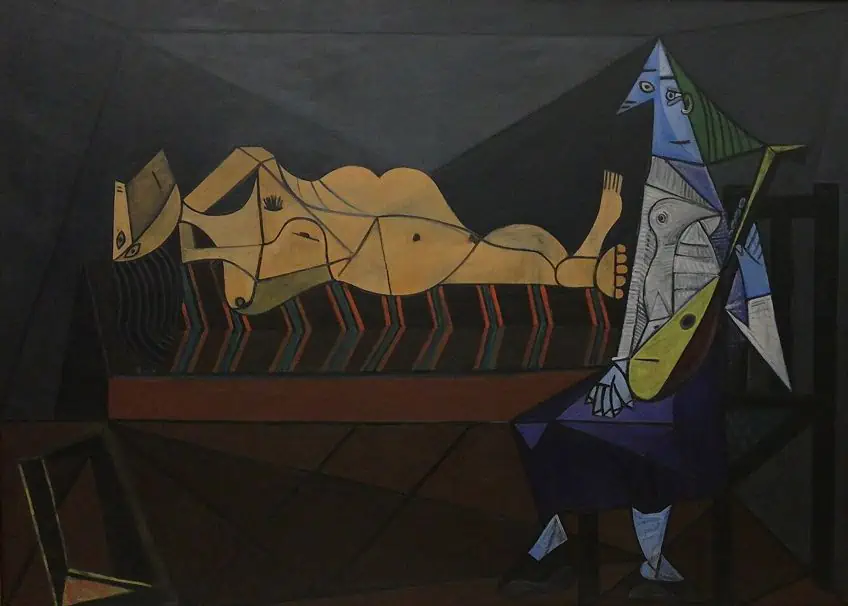
Cubism, as the name suggests, is characterized by the transformation of objects and subjects into geometric shapes, often resembling cubes or facets. It was born out of a desire to move beyond the limitations of the classical perspective, where objects were depicted as they appeared in a single, fixed moment in time. Instead, Cubist artists sought to capture multiple viewpoints and dimensions simultaneously, effectively deconstructing and reassembling reality in a wholly new and thought-provoking way.
Importance of Cubism Art in the Art World
Cubism’s significance in the art world cannot be overstated. It marked a profound shift in the trajectory of artistic expression, prompting a seismic change in the way artists perceived and conveyed the world around them. This movement challenged established notions of representation and brought forth a fresh way of interpreting the complexities of existence. One of the most transformative characteristics of Cubism was its ability to liberate art from the confines of traditional perspective.
By fracturing and reassembling forms, Cubist artists encouraged viewers to engage actively with their work, compelling them to consider multiple viewpoints and perspectives simultaneously.
This intellectual and perceptual challenge invited viewers to think deeply about the nature of reality, and in doing so, Cubism expanded the horizons of artistic exploration. Furthermore, Cubism acted as a catalyst for artistic experimentation, paving the way for a myriad of movements that followed, including Abstract art and Surrealism. Its influence can be seen in the works of countless artists who sought to break free from conventional constraints and embrace the fluidity of artistic expression.
History of Cubism Art: A Multi-Phased Revolution
Cubism, as an art movement, unfolded through a series of distinct phases, each characterized by its unique attributes and prominent figures. These phases not only reflect the evolution of the style but also shed light on the intellectual and artistic fervor that defined the Cubist journey.
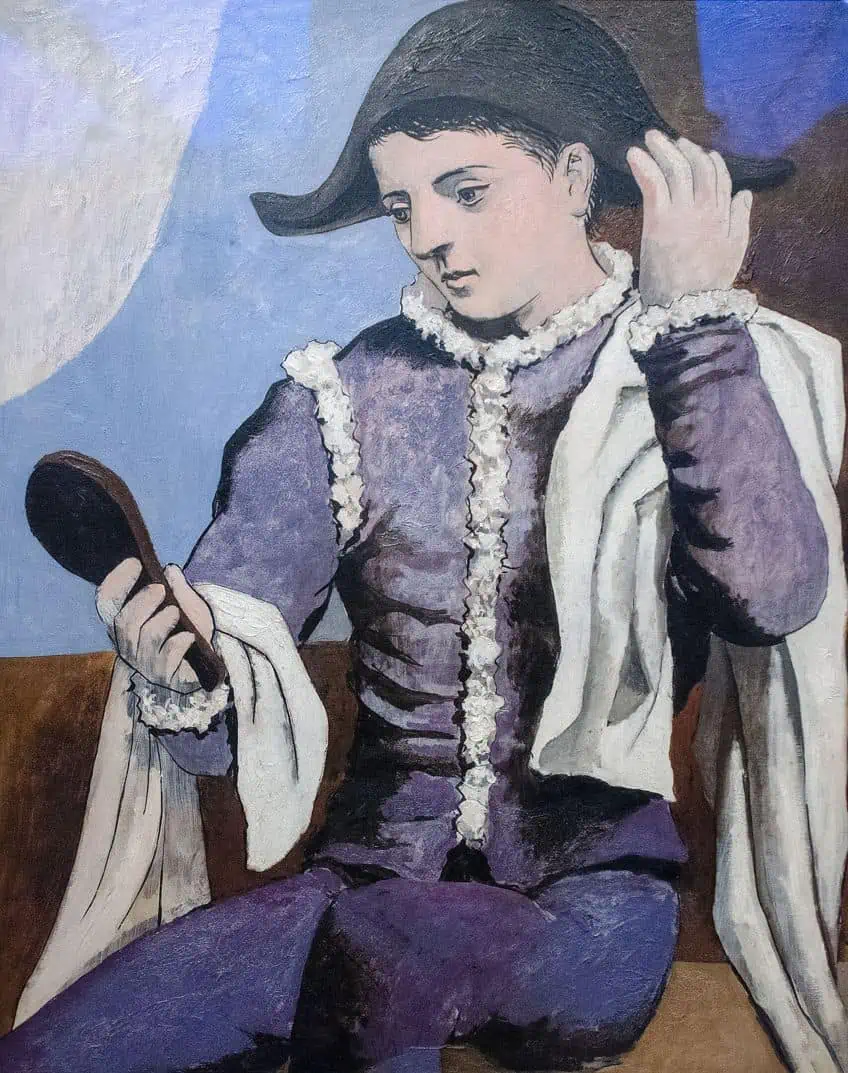
Early Cubism (1907 – 1911): The Analytical Phase
The inception of Cubism can be traced to the years between 1907 and 1911, often referred to as the “analytical” phase. During this period, luminaries like Pablo Picasso and Georges Braque undertook a meticulous deconstruction of objects and subjects. They aimed to distill these elements into their fundamental geometric forms. Shapes and figures were fragmented, and colors were predominantly subdued, favoring earthy tones and muted palettes. The hallmark of early Cubism was its emphasis on the intellectual deconstruction of reality.
Artists sought to explore the essence of objects by breaking them down into their constituent parts, presenting a fragmented yet profound view of the world.
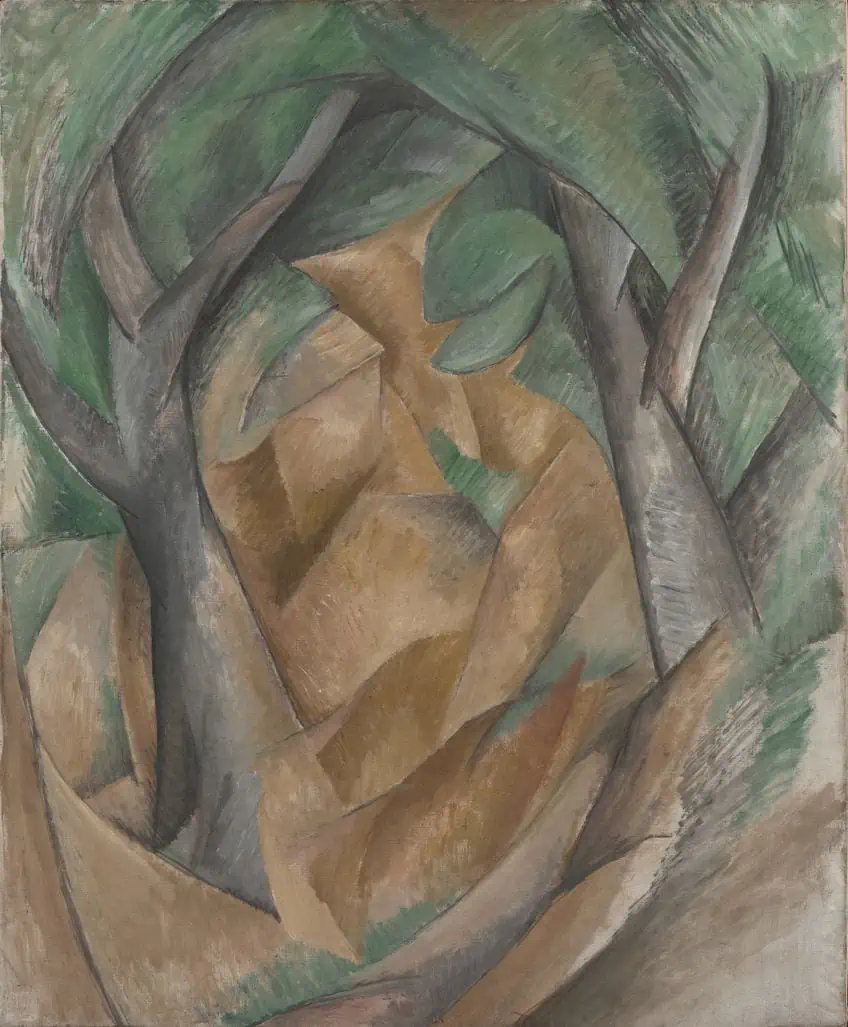
High Cubism (1911 – 1914): Complexity Unleashed
The subsequent phase, known as High Cubism (1911-1914), marked a period of increased complexity and dynamism within the Cubist movement. During this era, Cubist works evolved, introducing novel techniques and approaches. Artists began to incorporate collage and mixed-media elements into their compositions, including newspaper clippings and other real-world materials. The fracturing of forms reached new heights, creating intricate visual puzzles that challenged viewers to navigate the intricacies of the artists’ vision. High Cubism pushed the boundaries of artistic expression, blurring the line between the traditional two-dimensional canvas and the three-dimensional world it aimed to represent.
This epoch saw the emergence of some of the most iconic Cubist works that continue to captivate audiences today.
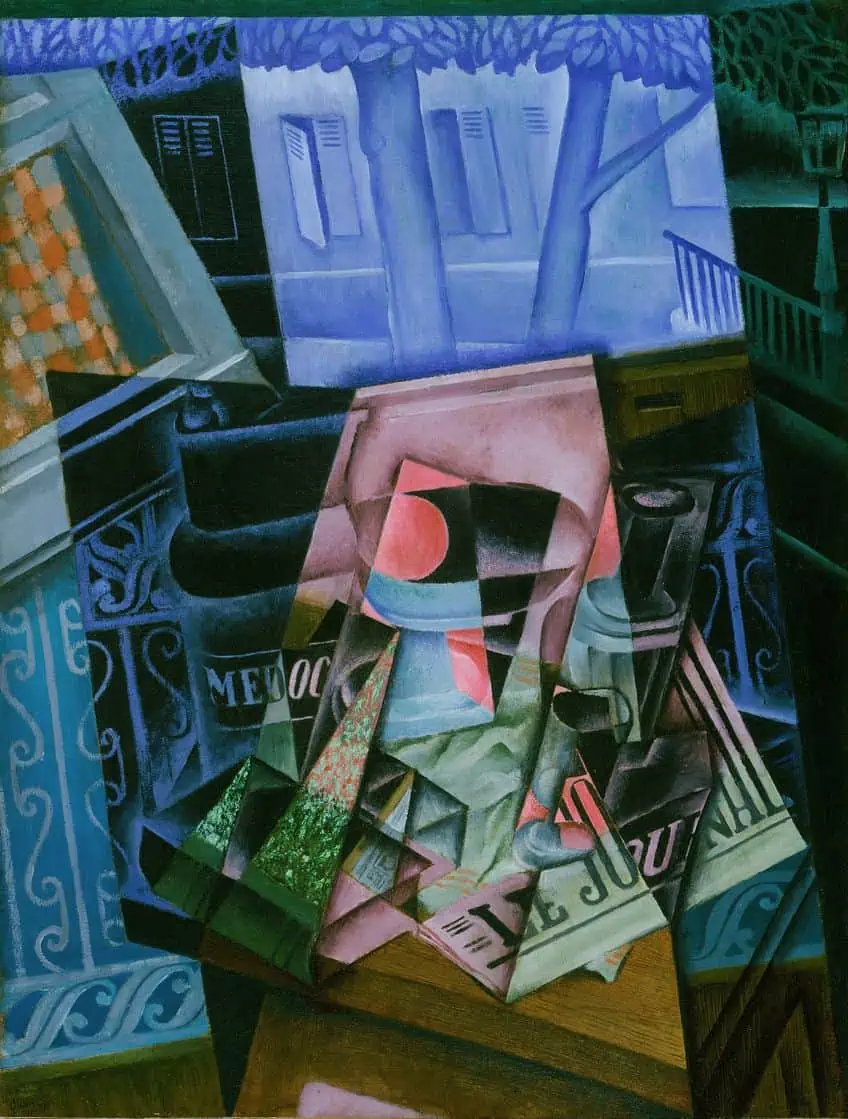
Late Cubism (1914 and Beyond): Evolution Amidst World War One
The outbreak of World War One in 1914 brought about yet another transformation in the Cubist movement, leading to what is often termed “Late Cubism.” During this period, Cubism diversified into various sub-styles, with one of the most notable being “Synthetic Cubism.” Artists like Juan Gris (1887 – 1927) played a pivotal role in this phase by introducing vibrant colors into their works, moving away from the subdued palettes of earlier periods. Furthermore, artists began to incorporate text and everyday objects into their compositions, blurring the lines between art and reality.
Synthetic Cubism, in particular, embraced a more playful and experimental spirit, celebrating the integration of everyday life into artistic creation.
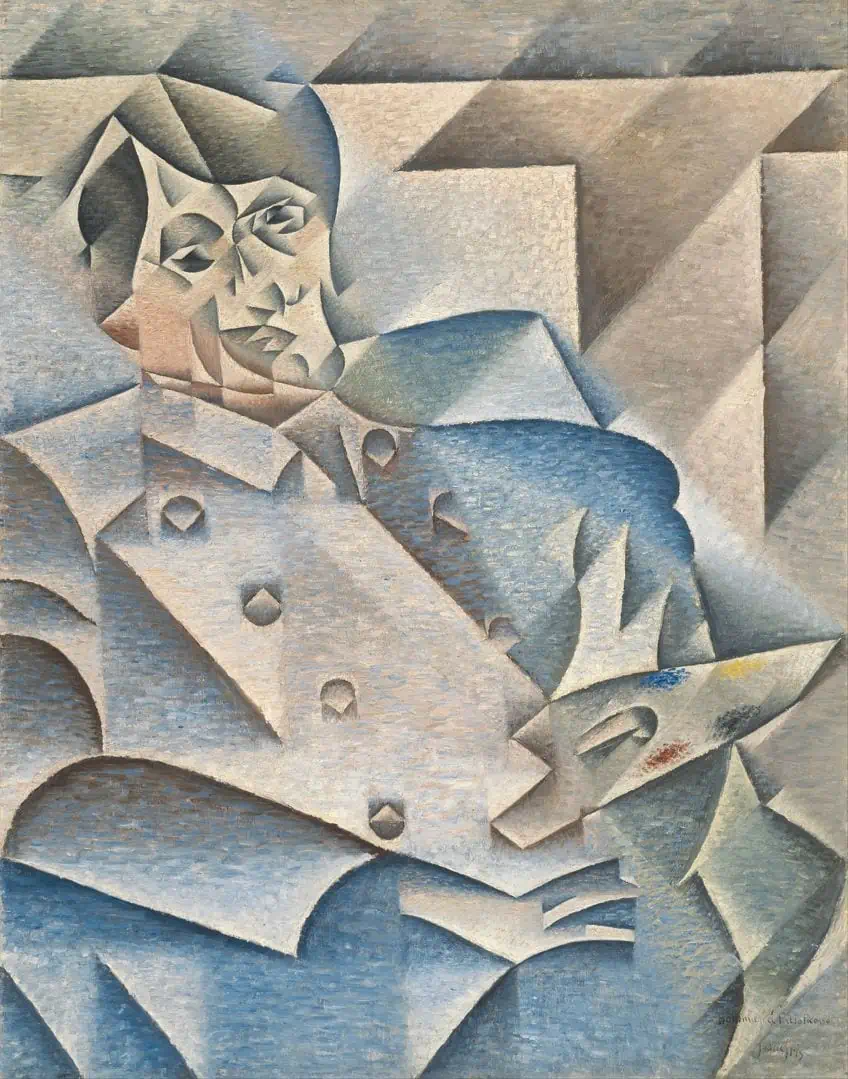
Cubism Around the World
Cubism’s impact extended far beyond the borders of France. It influenced artists worldwide, fostering movements like Russian cubo-futurism and inspiring Italian metaphysical painters. Cubism’s global influence underscored its universal appeal and its capacity to surpass cultural boundaries.
As Cubist principles found resonance with artists across the globe, the movement left an indelible mark on the art world, reshaping the course of artistic articulation and challenging orthodox ideas of representation.
Socio-Political Catalysts for the Cubism Movement
The birth of Cubism in France during the early 20th century was deeply intertwined with the socio-political landscape of the time. Notable moments and events played a pivotal role in laying the foundation for this revolutionary artistic movement. One crucial factor was the rapidly changing urban environment in France, particularly in Paris. The city was undergoing a process of rapid modernization, with the construction of the Eiffel Tower in 1889 being a prominent symbol of this transformation. The bustling urban life, marked by technological advancements and a sense of disorientation in the face of change, created an atmosphere of artistic experimentation.

Additionally, the early 20th century witnessed the emergence of intellectual and artistic movements that challenged traditional norms. The rapid spread of ideas from the Industrial Revolution and the advent of psychoanalysis, notably Sigmund Freud’s (1856-1939) theories, fueled a desire to explore the complexities of human perception and cognition. Artists sought to capture the multifaceted nature of reality, reflecting the intellectual ferment of the era.
Interplay With Other Art Movements
Cubism did not emerge separate from other artistic movements but was deeply influenced by the creative currents of its time. In many ways, it was a reaction to the artistic status quo. Just before Cubism’s emergence, art was dominated by movements such as Impressionism and Fauvism. Cubism arose as a response to these movements, seeking to explore the underlying structures of form and viewpoint. Cubism aimed to move beyond the transient sensory experience and delve into the fundamental essence of objects.
Let us look at the movements that preceded Cubism.
Impressionism (Late 19th Century)
This movement, characterized by its emphasis on capturing the fleeting effects of light and color, had dominated the art world for decades. Impressionism celebrated the sensory experience of the moment, but it left questions about the deeper structures of reality and the subjective nature of perception. The advent of photography in the 19th century had a profound impact on both Impressionism and Cubism art. Impressionists, with their emphasis on capturing the instantaneous and transient, were influenced by photography’s ability to freeze a moment in time. Cubists, on the other hand, drew inspiration from photography’s ability to represent subjects from various angles.
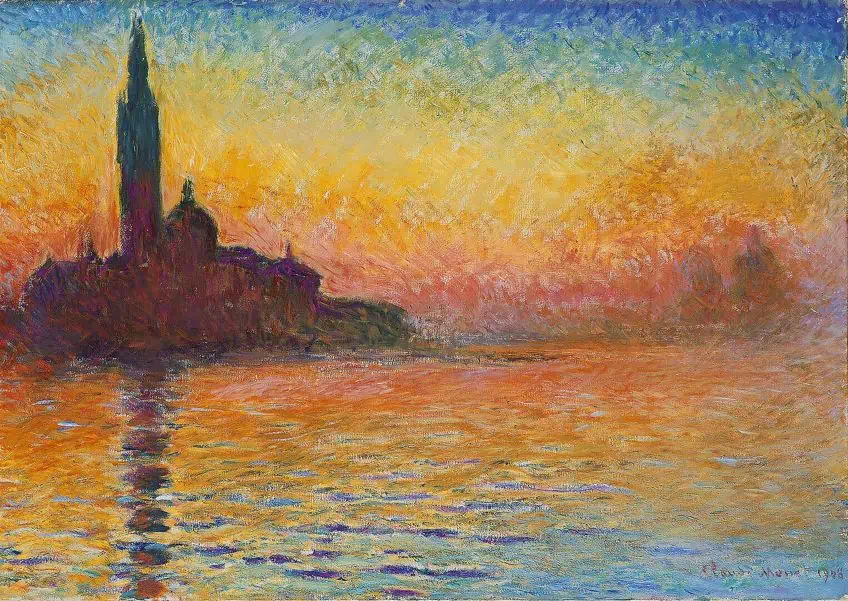
Fauvism (Early 20th Century)
Fauvism, which emerged around the turn of the century, took a bold step towards abstraction and the use of vibrant, non-naturalistic colors. Fauvist artists, like Henri Matisse (1869 – 1954) and André Derain (1880 – 1954), challenged traditional color theory and the realistic representation of objects. While both Cubism and Fauvism had an impact on the trajectory of modern art, Cubism’s influence extended to a wider range of movements, including Futurism, Constructivism, and Surrealism.
Fauvism’s impact, while significant, was more contained, primarily influencing the development of early 20th-century modernist art.
Cubism Characteristics: A Detailed Exploration
Cubism, with its ingenious and transformative qualities, stands as a distinct artistic movement, diverging significantly from the artistic “-isms” of its era. The following Cubism characteristics shed light on what makes this movement truly unique.

Geometric Abstraction
At the heart of Cubism lies the concept of geometric abstraction. Artists within the Cubist movement sought to break apart objects and subjects into geometric shapes, prominently utilizing cubes and facets. This geometric abstraction aimed not only to represent but also to contest the viewer’s understanding of reality. Unlike traditional linear perspective, Cubist artworks presented multiple viewpoints and dimensions simultaneously, offering a fragmented yet comprehensive portrayal of the subject matter.
Objects were no longer depicted as static entities but as dynamic interplays of form and space.
Analytical Approach
During its early phase, known as the “analytical” period, Cubism adopted an analytical approach that set it apart from contemporary artistic movements. Artists were meticulous in their study of objects, dismembering them to their most elemental components. This process involved a systematic dissection of form and structure, with the aim of capturing the essence of the subject matter. By breaking down things into their fundamental pieces, Cubism questioned the traditional notion of a single, fixed moment in time and invited viewers to engage with the deeper complexities of the world around them.
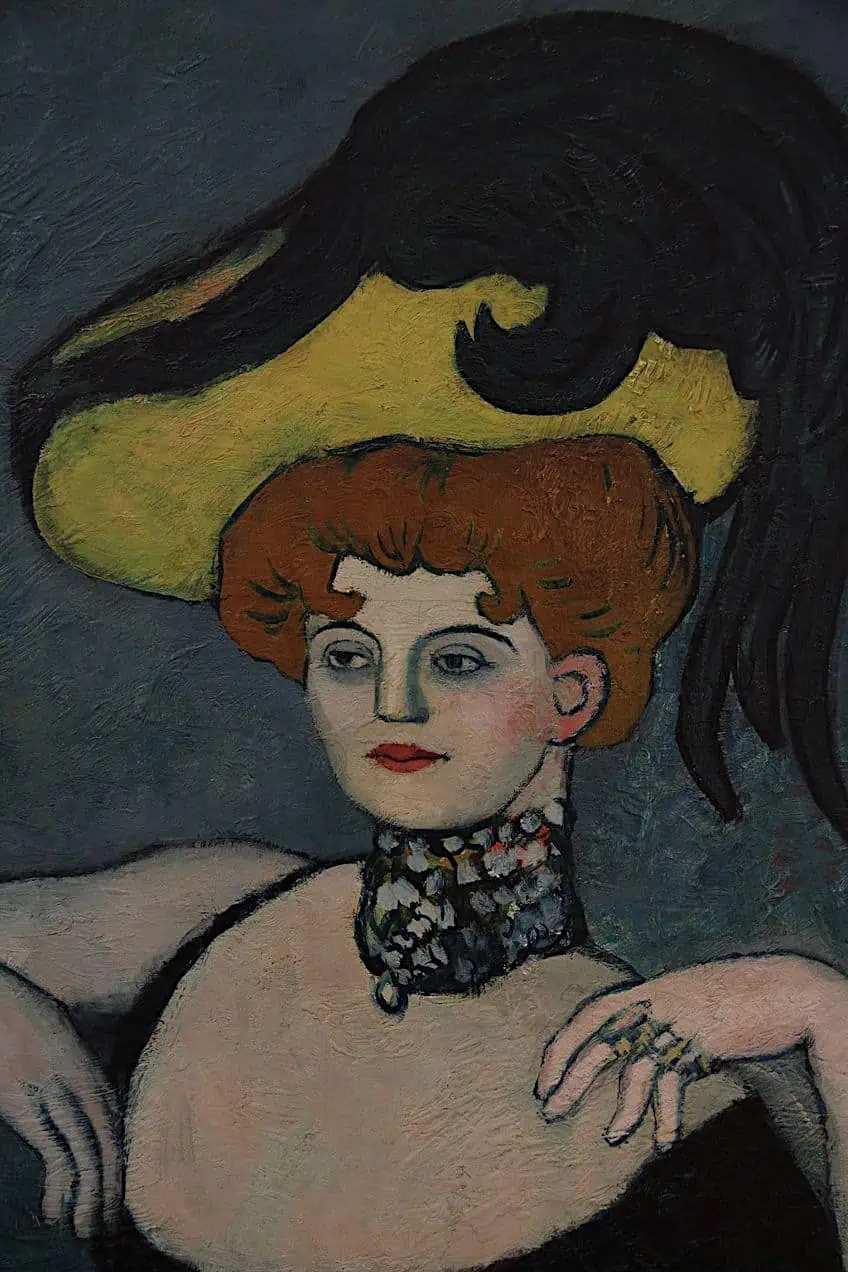
Collage and Mixed Media
High Cubism, which emerged between 1911 and 1914, introduced a profound shift in technique by incorporating collage and mixed-media elements into artworks. This innovation blurred the boundaries between art and reality. Artists began to incorporate real-world mediums such as newspaper clippings, segments of text, and even everyday objects into their designs. This approach expanded the artist’s palette, enabling them to add layers of meaning and context to their works.
The inclusion of these elements challenged traditional artistic norms, offering viewers a multifaceted experience that extended beyond the canvas itself.
Intellectual Engagement
One of the hallmark characteristics of Cubism is its ability to engage viewers on an intellectual level. Cubist artworks are not merely passive representations; they require active participation from the viewer. To decipher complex compositions and navigate the interplay of shapes and forms, viewers must think critically about the nature of life itself. This intellectual engagement encourages a deeper exploration of perception and perspective, prompting contemplation of the intricate relationship between the viewer and the artwork.

Color in Cubism: A Chromatic Revolution
In the realm of color, Cubism presented a departure from traditional palettes. While the early phase of Cubism favored subdued and monochromatic hues, the movement eventually embraced a vibrant and varied color scheme during the “synthetic” phase. Artists such as Juan Gris infused their works with striking colors, breaking away from the limitations of naturalistic color representation.
These bold color choices served to emphasize the interplay of shapes and forms within Cubist compositions, adding depth and dynamism to the artworks.
Cubist artists also experimented with the juxtaposition of contrasting colors within a single composition, creating visual tension and inviting viewers to perceive objects and subjects from multiple angles simultaneously. This use of color played a pivotal role in challenging traditional representational norms and infusing Cubist artworks with a sense of vitality.
Form in Cubism: Deconstructing and Reconstructing Reality
Cubism’s treatment of form was at the core of its artistic revolution. The fragmentation of objects allowed for the simultaneous representation of multiple viewpoints and dimensions within a single composition. This deconstruction and reassembly of form gave Cubist artworks a multifaceted quality, wherein objects were not static but active. The emphasis on form extended beyond the depiction of objects; it was a gateway to a deeper understanding of the underlying structures of existence.

Texture in Cubism: A Tactile Exploration
Cubism introduced a tactile dimension to art through its innovative approach to texture. While traditional art focused on rendering smooth and lifelike surfaces, Cubist artists embraced a textured aesthetic that emphasized the materiality of their works. Collage and mixed-media techniques allowed artists to incorporate real-world textures into their compositions, blurring the boundaries between art and reality. Through the incorporation of materials such as newspaper clippings, fabric, and even sand, Cubist artworks engaged the viewer’s sense of touch, inviting them to explore the physicality of the artwork.
This tactile dimension added depth and complexity to Cubist pieces, transforming them into multisensory experiences.
Perspective in Cubism: A New Way of Seeing
Perhaps one of the most distinctive characteristics of Cubism is its approach to perspective. Traditional linear perspective sought to create the illusion of depth and three-dimensionality on a two-dimensional canvas. In contrast, Cubism shattered this illusion, simultaneously presenting objects and subjects from multiple viewpoints and dimensions.
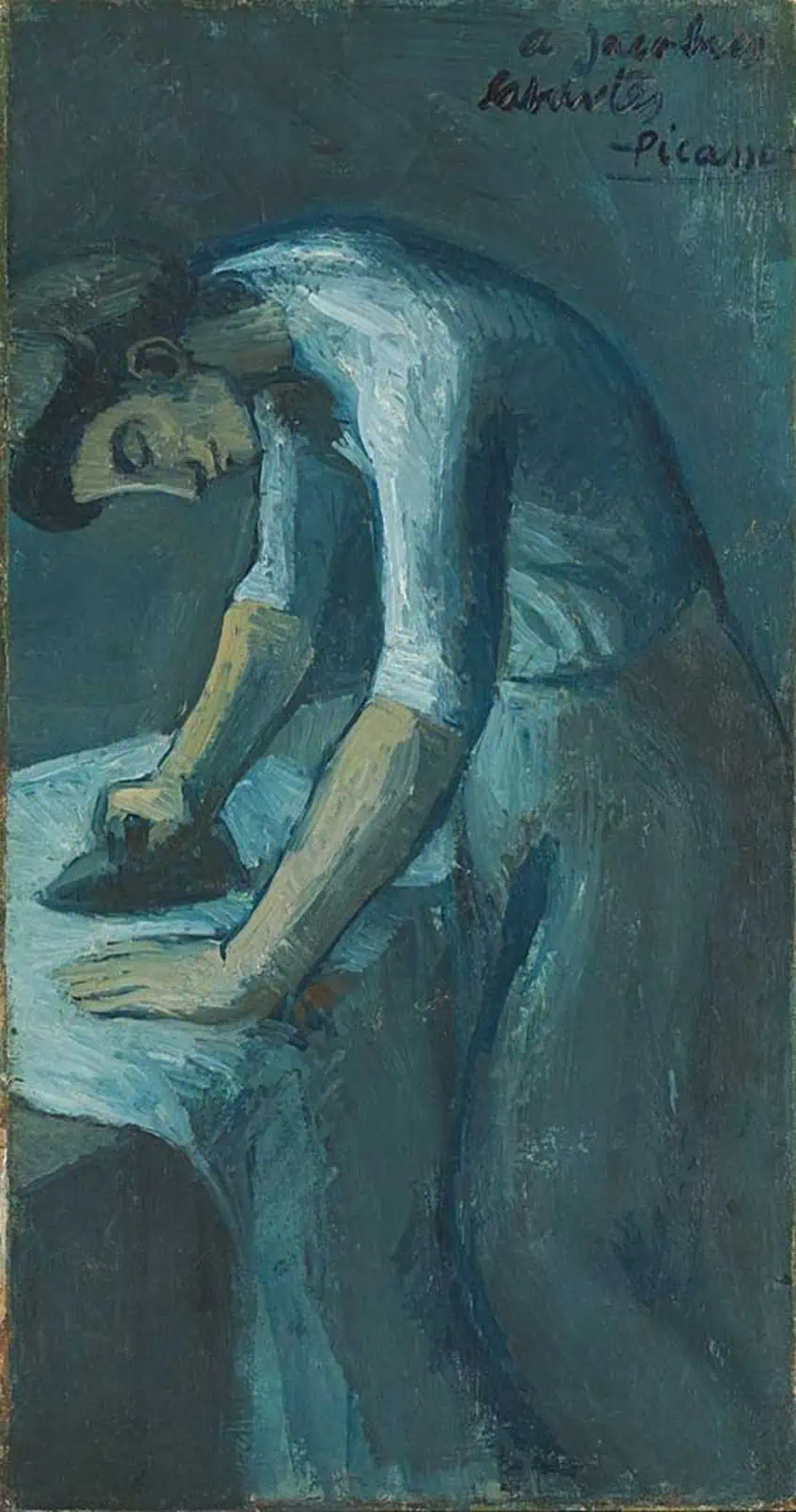
This fragmentation of perspective asks viewers to become involved with the artwork as they try to piece the subject or object together with their gaze, moving beyond passive observation actively. Instead of offering a single, fixed viewpoint, Cubist compositions demanded that viewers navigate the intricate visual puzzles, contemplating the relationship between different facets and angles.
Pablo Picasso and Georges Braque: Pioneers of Cubist Innovation
In the annals of art history, few partnerships have left as profound a mark as that of Pablo Picasso and Georges Braque. These visionary artists, working in tandem during the early 20th century, embarked on a transformative journey that would reshape the course of artistic expression. Their collaborative efforts gave birth to the Cubist movement, an avant-garde revolution that shattered conventional notions of representation and perspective. In this section of the article, we delve into the lives and artistic legacies of these two stars, exploring the dynamic interplay of their creative minds and the immense impact they left on the art world.
Picasso and Braque, through their groundbreaking work, ushered in a new era of artistic innovation that continues to captivate and inspire generations of art enthusiasts and scholars alike.
Pablo Picasso: Master of Cubism and Artistic Innovation
| Date of Birth | 25 October 1881 |
| Date of Death | 8 April 1973 |
| Country of Birth | Spain |
| Art Movements | Cubism, Surrealism, and Post-Impressionism |
| Genre/Style | Modern art |
| Mediums Used | Oil painting, printmaking, drawing, collage, and sculpture |
| Dominant Themes | All elements of life including despair, delight, pleasures, brutality, socio-political problems, modernization, civilization, and life in Europe |
Pablo Picasso, a name synonymous with artistic genius, stands as one of the most influential and celebrated artists of the 20th century. Born on October 25, 1881, in Málaga, Spain, Picasso’s early artistic talent was evident, and he received formal training at the Royal Academy of San Fernando in Madrid. However, it was his relentless pursuit of innovation and his insatiable creative spirit that would propel him to iconic status in the world of art.

Early Years and Blue Period
Picasso’s artistic journey began with a series of phases, each marked by distinct styles and themes. His “Blue Period,” from 1901 to 1904, was characterized by a somber palette and a focus on themes of poverty and despair, reflecting his personal struggles and the societal turmoil of the time.
This phase laid the foundation for his future explorations of human emotion and form.
Cubism and the Analytical Phase
Picasso’s most enduring legacy lies in his role as one of the founding fathers of Cubism, a groundbreaking movement that redefined the language of art. Collaborating closely with Georges Braque, Picasso embarked on the “analytical” phase of Cubism, spanning from 1907 to 1911. During this period, he dissected objects and subjects with meticulous precision, reducing them to their fundamental geometric forms. This analytical approach shattered the confines of traditional perspective, presenting multiple viewpoints and dimensions simultaneously. Picasso’s works from this phase, such as Les Demoiselles d’Avignon (1907), challenged viewers to engage with the complexities of perception and presentation, forever altering the course of art history.
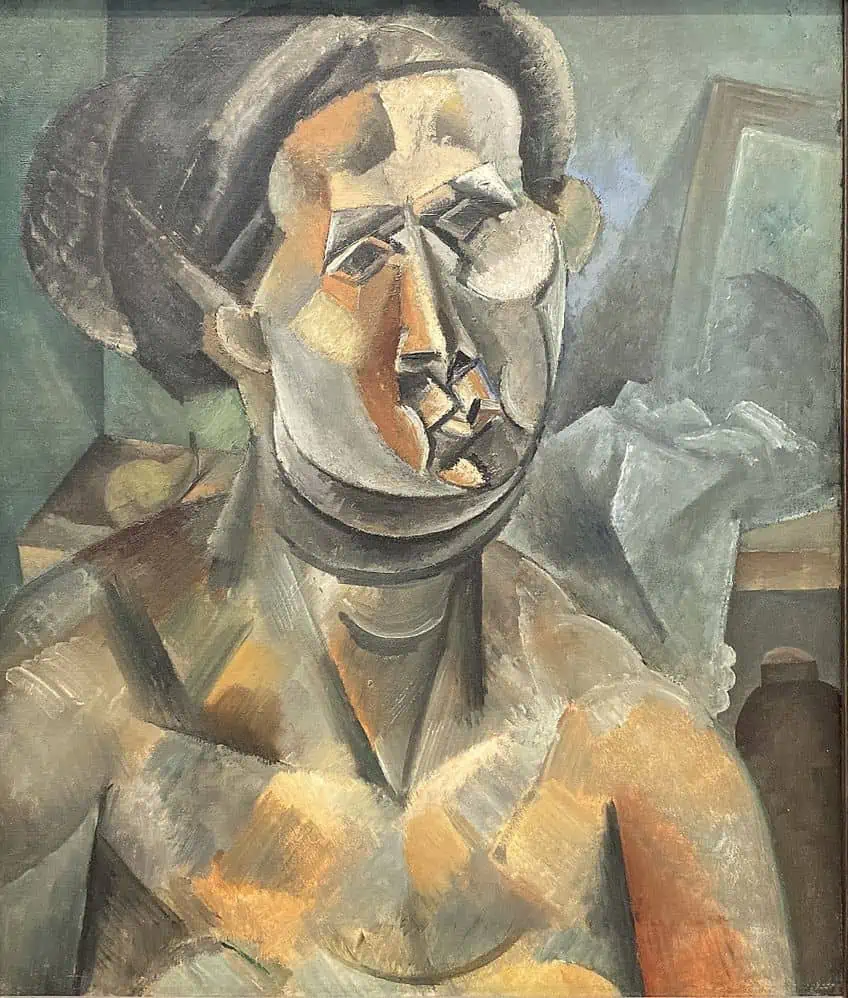
Cubism’s Evolution and Picasso’s Legacy
Picasso’s Cubist journey continued to evolve, leading to what is known as “High Cubism.” During this period, between 1911 and 1914, he introduced collage and mixed-media techniques into his works, pushing the boundaries of artistic expression. Notably, he collaborated with Braque to explore the integration of real-world elements, further blurring the lines between art and reality.
Throughout his illustrious career, Picasso’s influence extended far beyond the boundaries of Cubism.
He embraced a myriad of styles and techniques, including Surrealism and Neoclassicism, constantly reinventing himself and challenging artistic norms. His iconic works, such as Guernica (1937), serve as powerful testaments to his social and political engagement, capturing the horrors of war and the resilience of the human spirit.
Georges Braque: A Luminary of Cubist Innovation
| Date of Birth | 13 May 1882 |
| Date of Death | 31 August 1963 |
| Country of Birth | France |
| Art Movements | Cubism, Fauvism, Modern art, and Analytical Cubism |
| Genre/Style | Modern art |
| Mediums Used | Oil painting, collage, drawing, printmaking, and sculpture |
| Dominant Themes | Still life, portraits, landscapes, and life in Europe |
Georges Braque, an artistic fireball of the 20th century, is renowned for his pivotal role in the Cubist movement, an avant-garde revolution that forever changed the landscape of art. Born on May 13, 1882, in Argenteuil, France, Braque’s journey from an aspiring painter to a groundbreaking Cubist artist is a testament to his relentless pursuit of artistic innovation.
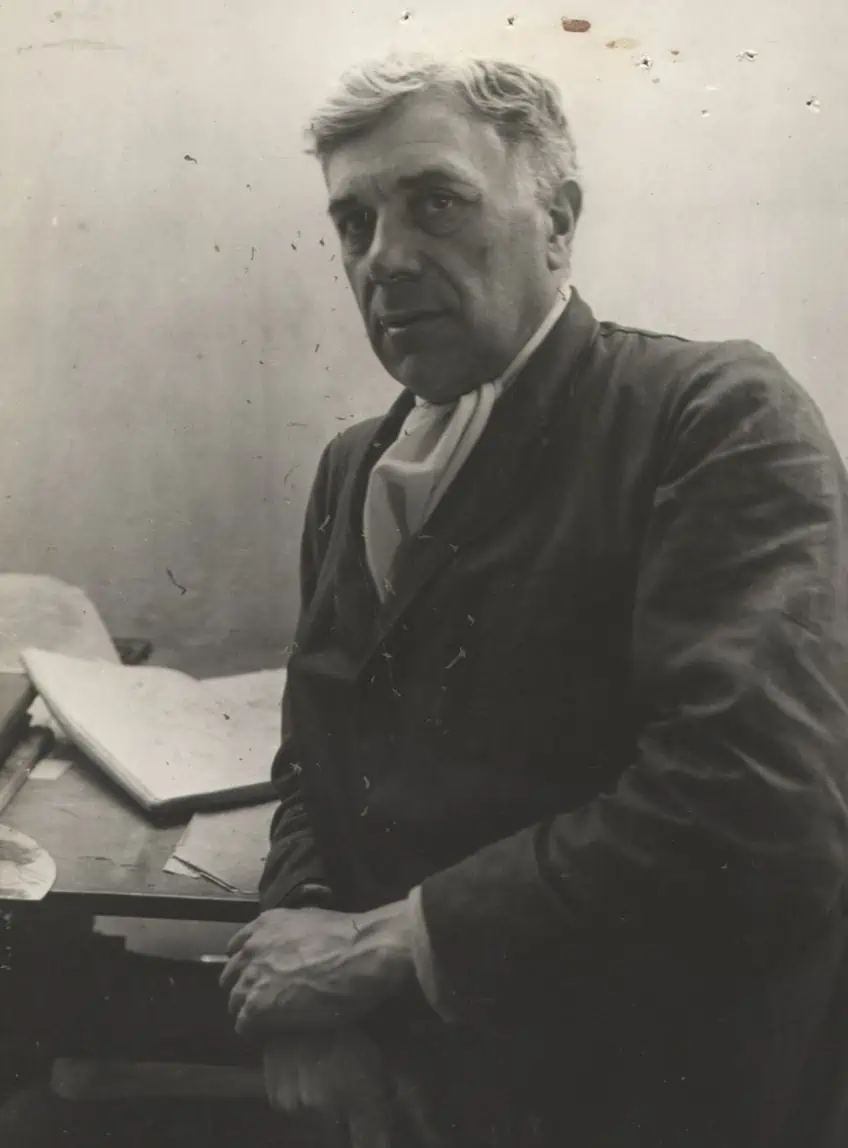
Early Years and Fauvism
Braque’s early career was marked by the influence of Fauvism, a vibrant and non-naturalistic artistic movement that emerged in the early 20th century. Under the tutelage of renowned artist Raoul Dufy, Braque honed his skills and developed his distinctive style.
During this phase, he experimented with bold colors and non-representational forms, foreshadowing his later groundbreaking work in Cubism.
Cubism’s Birth and Collaborative Spirit
The turning point in Braque’s career came in 1907 when he met Pablo Picasso, an encounter that would change the course of art history. Together, they embarked on the journey of Cubism, beginning with what is known as the “analytical” phase. During this period, spanning from 1907 to 1911, Braque, along with Picasso, meticulously dissected objects and subjects, breaking them down into geometric forms. The collaborative spirit between Braque and Picasso during this phase resulted in a remarkable body of work that laid the foundation for Cubism’s legacy.
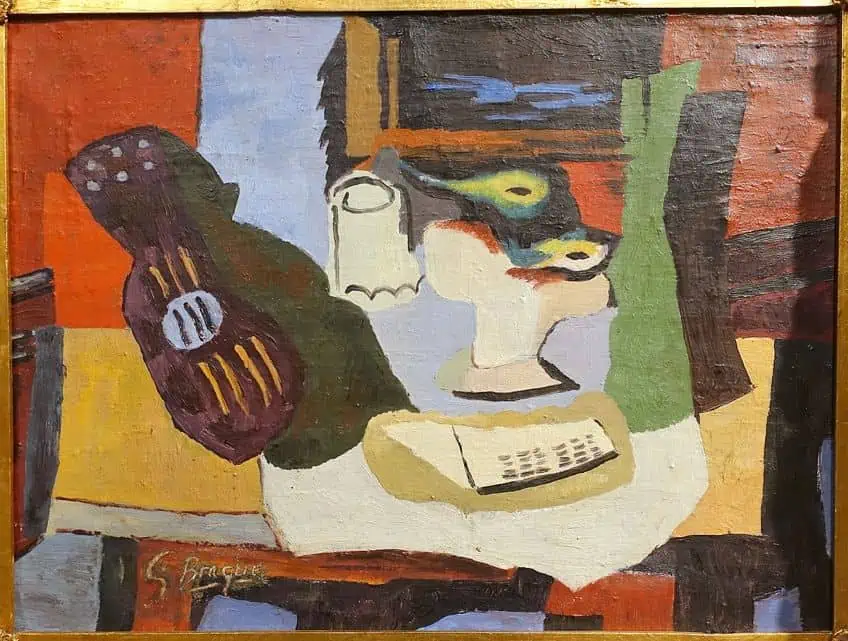
Innovation and Evolution
Braque’s contributions to Cubism extended beyond its initial analytical phase. He played a pivotal role in Cubism’s evolution into “High Cubism” between 1911 and 1914. During this period, Braque introduced collage and mixed-media techniques into his works, emphasizing the integration of real-world elements. His innovative approach blurred the boundaries between art and reality, giving his compositions a tactile and multidimensional quality.
The juxtaposition of diverse materials in his artworks, such as Violin and Palette (1909), demonstrated Braque’s relentless quest to push the boundaries of artistic expression.
Life and Legacy
Braque’s life was marked not only by his artistic brilliance but also by his resilience in the face of adversity. He served as a medic during World War I and was severely injured, an experience that deeply influenced his later works. Braque’s art continually evolved, moving through phases of Synthetic Cubism and embracing elements of Surrealism and abstraction.
Examples of Cubism: Analysis of Two Cubist Paintings
In this section, we delve into the heart of Cubism by analyzing two iconic paintings, each a masterpiece in its own right. Through our exploration of these works, we aim to unravel the complexities of Cubist art, revealing the genius of its creators and the profound impact of this avant-garde movement on the course of art history.
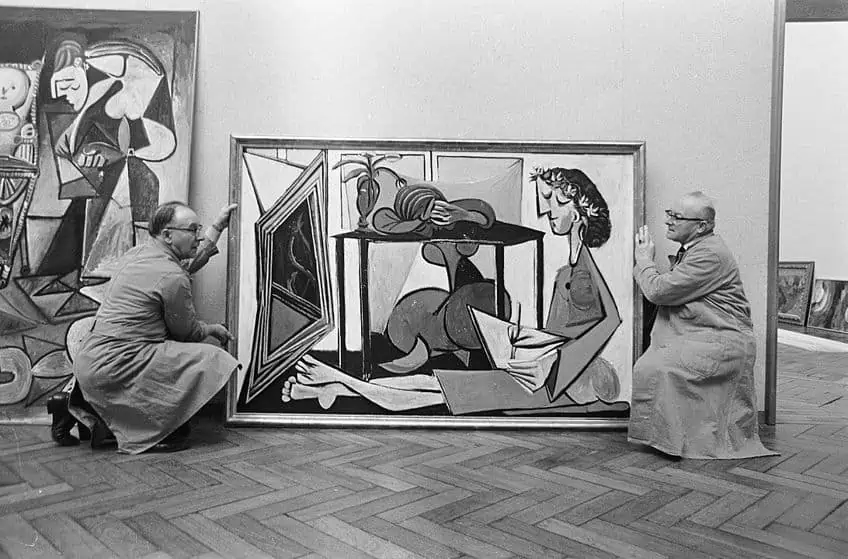
Les Demoiselles d’Avignon (1907) by Pablo Picasso
| Title | Les Demoiselles d’Avignon |
| Date | 1907 |
| Medium | Oil on canvas |
| Dimensions (cm) | 243.9 x 233.7 |
| Location | The Museum of Modern Art, New York City, United States |
Les Demoiselles d’Avignon is a groundbreaking and controversial masterpiece that marks a pivotal moment in the development of Cubism and Picasso’s career. It’s a complex composition that challenges traditional artistic norms and reimagines the representation of the human form. The painting presents a radical departure from traditional illustration. The female figures are fragmented and deconstructed into geometric shapes, primarily angular and sharp-edged. Picasso employs a jagged and angular linearity in the portrayal of the figures, breaking them down into a series of overlapping, disjointed planes.
Picasso’s fascination with African and Iberian art is evident in Les Demoiselles d’Avignon. The mask-like faces of some figures bear strong African tribal influences, particularly in the prominent use of angular and abstract facial features. The Iberian influence is seen in the mask-like qualities of some of the faces.
The composition of the painting is intentionally asymmetrical and distorted.
The figures on the left are more geometrically structured and angular, while those on the right are more fragmented and abstract. This visual tension between the two sides adds complexity to the piece. Picasso employs multiple viewpoints and fractured perspectives, challenging the viewer’s understanding of space and depth. There is a sense of disorientation and ambiguity in the spatial relationships between the figures and the setting. The color palette in Les Demoiselles d’Avignon is dominated by earthy tones, browns, and ochres, which contribute to the sense of primal or tribal art. The colors are intentionally subdued, drawing attention to the formal and structural aspects of the composition.
Les Demoiselles d’Avignon is a complex and multi-layered work that goes beyond visual analysis. Conceptually, it represents a radical departure from traditional artistic norms and challenges the viewer to confront themes of sexuality, primitivism, and the fracture of artistic convention. Picasso’s interest in African and Iberian art reflects a fascination with primitivism and non-Western artistic traditions. The use of mask-like faces and the distortion of the human form underscore his exploration of primal and non-conventional aesthetics.
The depiction of the female figures is provocative and confrontational. Picasso disrupts conventional ideals of beauty and femininity, portraying the women as confrontational and empowered. The ambiguous and at times confrontational gazes of the figures challenge traditional representations of the female form. Les Demoiselles d’Avignon is a testament to Picasso’s willingness to push artistic boundaries and explore new visual languages. It marked a significant shift in his own artistic development and paved the way for the emergence of Cubism as a revolutionary movement.
Violin and Palette (1909) by Georges Braque
| Title | Violin and Palette |
| Date | 1909 |
| Medium | Oil on canvas |
| Dimensions (cm) | 91.8 × 42.9 |
| Location | The Guggenheim Museums and Foundation, New York City, United States |
Violin and Palette by Georges Braque is a quintessential example of his early Cubist work. The painting is characterized by its intricate interplay of geometric forms, fractured perspectives, and muted color palette. The painting immediately grabs the viewer’s attention with its fragmented composition. Objects and forms are deconstructed into geometric shapes, primarily cubes and facets. The violin, for example, is reduced to a series of angular forms, creating an abstract representation that challenges traditional perspectives. Braque’s color choices in Violin and Palette are subdued and earthy. Dominated by shades of brown, gray, and muted green, the painting eschews the vibrant colors of Fauvism, a movement that Braque was associated with before delving into Cubism. These subdued colors add to the sense of intellectual contemplation that defines Cubism.
One of the striking features of this artwork is the inclusion of collage elements. Braque incorporated snippets of newspaper clippings and wallpaper into the composition, a hallmark of his “High Cubist” phase. These real-world materials, though abstracted and fragmented, create a tactile quality within the painting, blurring the lines between art and reality.
Violin and Palette presents the viewer with multiple viewpoints of objects simultaneously.
The palette, for instance, is depicted from both top and side angles, creating a sense of spatial ambiguity. This fractured perspective invites viewers to engage actively with the painting, pondering the nature of perception and the multifaceted reality it portrays. Despite the abstraction and fragmentation, Braque pays meticulous attention to detail. The strings of the violin, for example, are intricately rendered, showcasing the artist’s skill and commitment to capturing the essence of the subject matter.
Violin and Palette epitomizes the Cubist approach to art, which seeks to deconstruct and reconstruct reality in a wholly new way. The painting challenges traditional notions of perspective and representation, inviting viewers to explore the underlying structures of objects and the multifaceted nature of perception. At its core, Violin and Palette is a profound exploration of the relationship between the artist, the subject matter, and the viewer. Braque’s incorporation of real-world materials and his fragmented representation of objects suggest a keen awareness of the materiality of art and the role of the viewer in deciphering its complexities. Furthermore, the painting serves as a testament to Braque’s collaborative spirit with Picasso during the development of Cubism. It reflects their shared commitment to breaking away from the conventional and their willingness to innovate and experiment with form, texture, and perspective.
In conclusion, the Cubism movement stands as a testament to the transformative power of art. Through our exploration of iconic examples of Cubist paintings and unpacking the history of Cubism and its characteristics, we have answered the heart of the question: What is Cubism? The legacy of Cubism artists and their groundbreaking Cubist paintings continues to captivate, inspire, and intrigue viewers to perceive the world in new and innovative ways. Cubism remains a cornerstone in the rich tapestry of art history, inviting us to appreciate the beauty of complexity and the limitless potential of human creativity.
Take a look at our Cubist art webstory here!
Frequently Asked Questions
What Is Cubism?
Cubism was a revolutionary artistic movement that emerged as a response to a rapidly changing world. Its distinctive characteristics, including geometric abstraction, analytical methodology, incorporation of collage and mixed media, and intellectual engagement set it apart from contemporary art movements. Cubism challenged established artistic conventions and ushered in a new era of artistic expression that continues to captivate and inspire art enthusiasts and scholars alike, making it a timeless and pivotal chapter in the history of art.
Why Is Pablo Picasso Such a Famous Cubism Artist?
Pablo Picasso’s impact on the art world is immeasurable. His ceaseless experimentation, boundless creativity, and willingness to deconstruct and reimagine artistic conventions continue to inspire generations of artists. Beyond his artistic achievements, Picasso’s life was marked by his spirited personality, his profound influence on the art community, and his legendary status as a cultural icon. His legacy as a Cubism artist and a visionary who transcended artistic boundaries ensures that his name will forever be synonymous with innovation and artistic brilliance.
What Are the Three Types of Cubism?
The three primary types of Cubism are Analytical Cubism, Synthetic Cubism, and Orphism. Analytical Cubism, exemplified by artists like Picasso and Braque, focuses on breaking down objects into geometric forms and presenting multiple perspectives simultaneously. Synthetic Cubism, often associated with Juan Gris, introduces collage and mixed-media elements, incorporating real-world materials into artworks. Orphism, championed by artists like Robert Delaunay, explores the use of vibrant colors and abstract forms to create dynamic and harmonious compositions, often emphasizing the spiritual and emotional aspects of art. These three types of Cubism reflect the movement’s evolution and its diverse approaches to artistic innovation.
What Are Five Cubism Characteristics?
The key characteristics of Cubism are geometric abstraction, analytical approach to objects and subjects, use of collage and mixed media, intellectual engagement with the viewer, and the fragmentation of forms and perspectives.
Nicolene Burger, a South African multimedia artist and creative consultant, specializes in oil painting and performance art. She earned her BA in Visual Arts from Stellenbosch University in 2017. Nicolene’s artistic journey includes exhibitions in South Korea, participation in the 2019 ICA Live Art Workshop, and solo exhibitions. She is currently pursuing a practice-based master’s degree in theater and performance. Nicolene focuses on fostering sustainable creative practices and offers coaching sessions for fellow artists, emphasizing the profound communicative power of art for healing and connection. Nicolene writes blog posts on art history for artfilemagazine with a focus on famous artists and contemporary art.
Learn more about Nicolene Burger and about us.
Cite this Article
Nicolene, Burger, “Cubism Art – A Movement That Reconstructed Modernism.” artfilemagazine – Your Online Art Source. November 1, 2023. URL: https://artfilemagazine.com/cubism-art/
Burger, N. (2023, 1 November). Cubism Art – A Movement That Reconstructed Modernism. artfilemagazine – Your Online Art Source. https://artfilemagazine.com/cubism-art/
Burger, Nicolene. “Cubism Art – A Movement That Reconstructed Modernism.” artfilemagazine – Your Online Art Source, November 1, 2023. https://artfilemagazine.com/cubism-art/.



